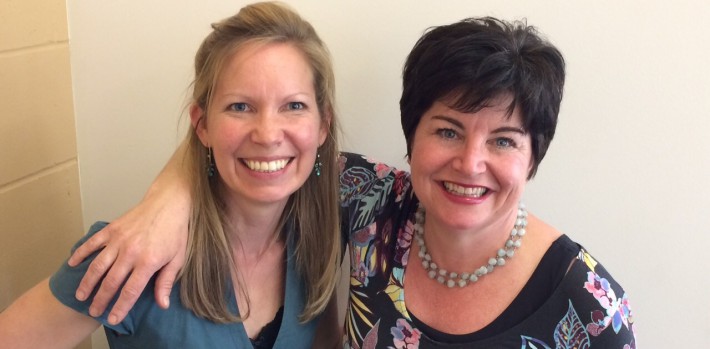
Through the design, assessment and refinement of CEHD’s highly regarded first-year-experience program, professor and chair of the Department of Postsecondary Teaching and Learning, Amy Lee, and research associate, Rhiannon Williams, began a collaboration that’s evolved into a dynamic partnership: one deeply committed to enhancing holistic student development by supporting academic professionals who are directly and indirectly serving undergraduate students.
Lee and Williams bring complementary strengths to their work. Williams values Lee’s innovation, leadership and feministic critical background, and Lee credits Williams’ assessment skills, intercultural perspective and openness as vital. “I don’t feel I could do what I’ve done without Rhiannon,” says Lee. “Especially considering how rooted our work has been in the first-year program, and the diversity of the students we serve. That’s what brought us into thinking about holistic curriculum and co-curriculum to propel student development.” Williams adds, “Amy’s really gotten me to think with a critical lens and how that looks in terms writing.”
Together, they’ve authored numerous articles and three books motivated by the data collected from assessment of the FYE program, applying different perspectives to intercultural collaborations and how these can be supported, developed, thought about across multiple disciplines and bodies of literature. “We’re really trying to be interlocutors, bridging discourse communities,” says Lee.
Their first book, Engaging Diversity In Undergraduate Classrooms: A Pedagogy For Developing Intercultural Competence (2012) co-authored with Robert Poch and Marta Shaw, moves past the FYE program, incorporating scholars and scholarship from across different fields, to present a macro lens on lessons learned from engaging diversity broadly in the classroom.
In their recently published, edited volume, Internationalizing Higher Education: Critical Collaborations Across The Curriculum (2015), Lee and Williams push beyond theoretical frameworks to offer faculty, administrators and advisors an exploration of intercultural learning through applications in a variety of contexts. “We felt there were few publications with examples of how internationalizing the curriculum was being enacted,” says Williams. “We wanted to show how institutions are supporting this work and how it looks in an actual classroom.” Contributing chapters from practioners across a wide spectrum of disciplines, geographies and institutions candidly examine different ways intercultural perspectives have been integrated into their programs, including the tensions and opportunities of internationalizing the curriculum in a holistic manner. “The higher education academy has such a premium on scholarly identity, but teaching is still under the radar,” says Lee. “We wanted to give our book a more useful, purposeful form.”
According to Lee, their third book is even bolder. Set for publication in 2016, Intercultural Pedagogy: Equity And Global Citizenship In Contemporary Classrooms, co-authored with Catherine Solheim and Adam Jagiello-Rusilowksi, continues to support practioners and get faculty thinking: How can we come together in this larger intercultural work? “We are trying to pull people together to collaborate and support the structures and spaces that are going to develop students’ intercultural skills so students are able to use them in the workplace and society,” says Williams.
In addition to blending theory with application, Lee and Williams are also interested in disseminating the voices of colleagues and students. “Students are a source of great expertise on their own experience and needs and they are not consulted in real ways in a lot of research, and the same is true with teachers,” remarks Lee. “We’re trying to value and enfranchise the wisdom of the people we’re trying to reach or support.”
Based in themes of inclusion and equity, their work refuses the common dichotomy of writing for teachers or scholars, writing for domestic or international audiences. For Lee and Williams, the student is at the center of a higher ed. institution for everyone, and their work reinforces this position. “Our work is always about the students,” says Lee. “But in order to support the students, you need to further the knowledge, understanding and capacity of the people to support their students’ development.”
Williams adds, “Whether you’re an administrator, faculty, advisor or whatever role you have, there are ways to collaborate and engage in intercultural work within your smaller space. It doesn’t need to come from the top down and it doesn’t have to look one way, it’s an ongoing process.”



